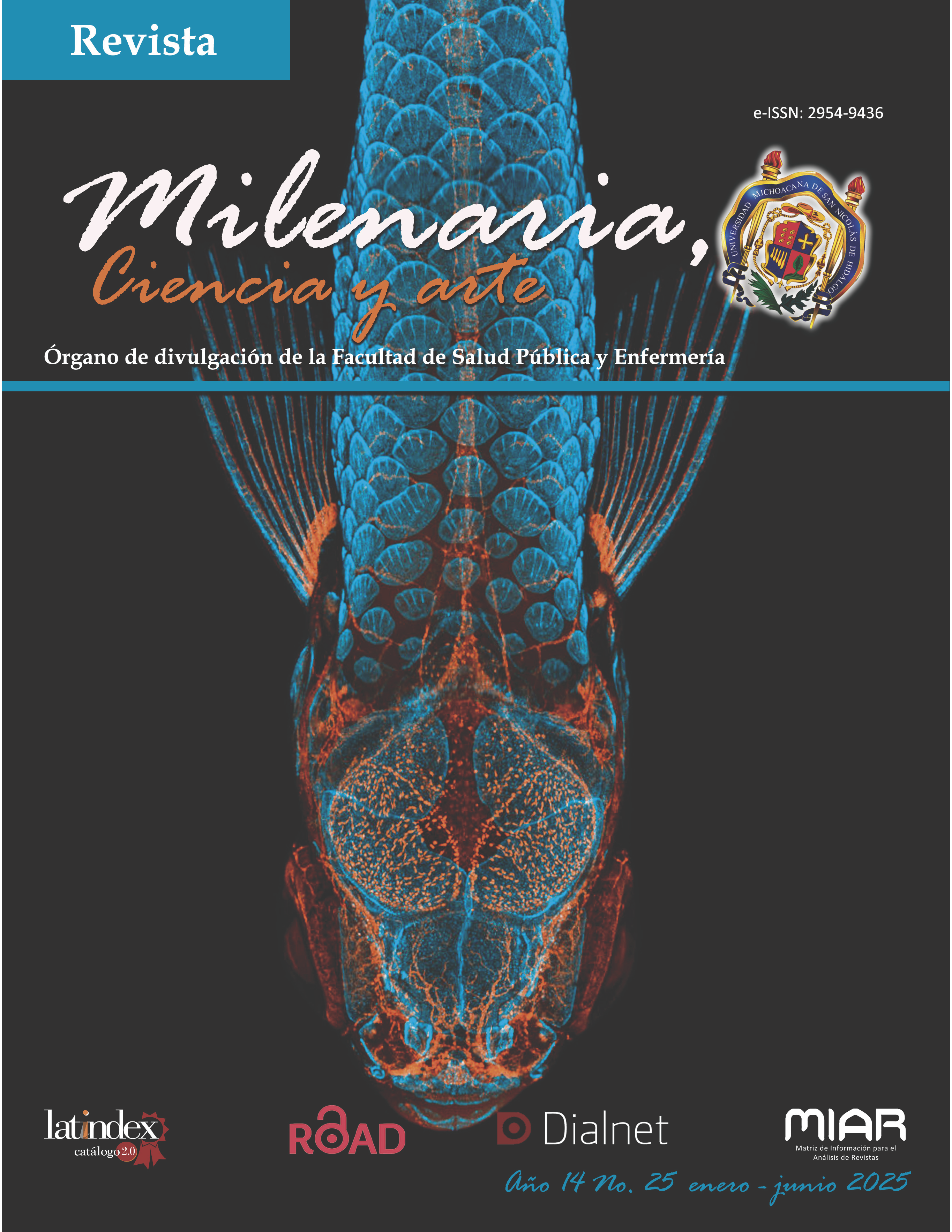Cells. Sex does matter in drug research
DOI:
https://doi.org/10.35830/mcya.vi25.641Keywords:
Gender equity, SAGER guidelines, Enviromentally determined sexAbstract
Given the ethical challenges involved in vertebrate research, the use of parasitic invertebrates and flies has been proposed as alternative models. However, this choice may imply a denial of the rights of these animals, and by omitting mention of sex, it loses sight of a complexity that, in many cases, exceeds that of sex in rats. In these species, in addition to chromosomal definition, sex is influenced by environmental factors. The training of researchers must include a gender and sex equity perspective, recognizing differences even at the cellular level. Even within the binary model, there are multiple differences between men and women, such as the density and expression of cellular progesterone receptors or the lower concentration of certain enzymes in one sex or the other. However, much research continues to be conducted almost exclusively with men as subjects. Until we fully understand the biology of human sex, both in laboratory models and cell lines, the variable “sex” should be included in all studies, in accordance with the SAGER (Sex and Gender Equity in Research) guidelines. These guidelines propose that cellular, molecular, and biochemical biology establish the chromosomal sex of the sample. However, nothing is said about environmentally determined sex in various animal species. Systematically including the variable sex would enrich our knowledge of biological differences and similarities, helping to reduce disparities in medical treatment. Paradoxically, a treatment can be unequal precisely when it is applied equally, without considering individual differences, as is the case with sex.
Downloads
References
Armstrong-Jr., R., Yamamoto, Ricardo-da-Silva, F.Y., Vidal-dos-Santos, M., Ferreira da Anunciacao, L., Ottens, P.J., Correia, C.J., Pinho Moreira, L. F., Derk Leuvenink, H.G. & Breithaupt-Faloppa, A.C. (2023) Comparison of acute kidney injury following brain death between male and female rats. Clinics 78: 100222, https://doi.org/10.1016/j.clinsp.2023.100222.
Dunn, M.C. Rosenfeld, E.B., Ananth, C.V., Hutchinson-Colas, J., Brandt, J.S. (2023). Gender-inclusive research instructions in author submission guidelines: results of a cross-sectional study of obstetrics and gynecology journals. American Journal of Obstetrics and Gynecology MFM 5:100911, http://dx.doi.org/10.1016/j.ajogmf.2023.100911.
Fernández-Guasti, A.,Gómez Quintanar, b., Reyes, R., Hernández, A., Chavira, R. & Roselli, C.E. (2022). Androgen receptors immunoreactivity in the rat brain of males with same-sex preference. Hormones and Behavior 146: 105279, https://doi.org/10.1016/j.yhbeh.2022.105279.
Fernandez-Garcia, J.M., Carrillo, B., Tezanos, P., Pinos, H. & Collado, P. (2023). Genistein early in life modifies the arcuate nucleus of the hypothalamus morphology differencially in male and female rats. Mollecular and Celullar Endocrinology 570:111933. https://doi.org/10.1016/j.mce.2023.111933.
Green-Fulgham, S.M., Ball, J.B., Kwilasz, A.J., Harland, M.E., Frank, M.G., Dragavon, J.M., Grace, P.M. & Watkins, L.R. (2024). Interleukin-1beta and inflammasome expression in spinal cord following chronic constriction injury in male and female rats, Brain Behavior and Inmunity. 115: 157-168. https://doi.org/10.1016/j.bbi.2023.10.004.
Johnson, A.C. Uhlig, F., Einwag, Z., Cataldo, N. & Erdos, B. (2022). The neuroendocrine stress response impairs hippocampal vascular function and memory in male and female rats, Neurobiology of Disease 168:105707. https://doi.org/10.1016/j.nbd.2022.105717.
Kutash, L.A., Moschonas, E.H., O’Neil,D.A., Craine, T.J., Iouchmanov, A. L., Sunleaf, C.R., Nicholas, M.A., Grobengieser, K. O., Patel, A. K., Toader, M., Ranellone, T.S., Rennelfeldt, P.L., Cheng, J.P., Race, N.S., Kline, A.E., & Bondi, C.O. (2023). Sustained attention performance deficits in the three-choice serial reaction time task in male and female rats after experimental brain trauma. Brain research 1808: 148336, https://doi.org/10.1016/j.brainres.2023.148336
Lee, S.Y., Lee, D.Y., Kang, J.H., Jeong, J.W., Kim, J.H., Kim, H.W., Oh, D.H., Kim, J.M., Shin-Jae Rhim, Kim, W.D., Kim, H.S., Jang, Y.J., Park, Y., Hur, S.J. (2022). Alternative experimental approaches to reduce animal use in biomedical studies. Journal of Drug Delivery Science and Technology, (68), 103131. https://doi.org/10.1016/j.jddst.2022.103131
Maher, E.E., White, A.M., Craig, A., Khatri, S., Kendrick, P.T., Matocha, M. E., Bondy, E.O., Pallem, N., Breakfield, G., Botkins, M., Sweatt, O., Griffin, W.C., Kaplan, B., Weafer, J.J., Beckmann, J.S. & Gipson, C.D. (2023). Synthetic contraceptive hormones occlude the ability of nicotine to reduce ethanol consumption in ovary-intact female rats. Drug and Alcohol Dependence 252: 110983, https://doi.org/10.1016/j.drugalcdep.2023.110983
Minabe, S., Iwata, K., Tsuchida, H., Tsukamura, H. & Ozawa, H. (2021). Effect of diet-induced obesity on kisspeptin-neurokinin B-dynorphin A neurons in the arcuate nucleus and luteinizing hormone secretion in sex hormone-primed male and female rats. Peptides 142: 170546. https://doi.org/10.1016/j.peptides.2021.170546
Minchew, H.M., Ferren, S.L., Christian, S.K., Hu,J., Keselman, P. Brooks, W.M. Andrews, B.T. & Harris, J.L. (2022). Comparing imaging biomarkers of cerebral edema after TBI in young adult male and female rats. Brain research 1789:147945, https://doi.org/10.1016/j.brainres.2022.147945
Ortiz-Avila, O. & García Berumen, C.I. (2024). Modelos animales: Una necesidad en la investigación científica. Milenaria Ciencia y Arte 14:24.
Shen, C.-L., Santos, J., Driver, Z., Bhakta, V., Presto, P., Wang, R., Deshmukh, H., Kiritoshi, T., Yakhnitsa, V., Antenucci, N., Guangchen, J., Neugebauer, V.(2023). Ginger Differentially Mitigates Neuroinflammation and Improves Mitochondrial Function in Male and Female Rats With Neuropathic Pain: Gut-Brain Axis. Current Development in Nutrition 7 Supp 1: 10058, https://doi.org/10.1016/j.cdnut.2023.100582
Yardimci, A., Ertugrul, N.U., Ozgen, A., Ozbeg, G., Ozdede, M.R., Ercan, E.C. & Canpolat, S. (2023). Effects of chronic irisin treatment on brain monoamine levels in the hypothalamic and subcortical nuclei of adult male and female rats: An HPLC-ECD study. Neuroscience Letters 806:137245, https://doi.org/10.1016/j.neulet.2023.137245
Zakiniaeiz, Y. & Potenza, M.N. (2018). Gender-related differences in addiction: a review of human studies. Current Opinion of Behavioral Sciences 23: 171-175. https://doi.org/10.1016/j.cobeha.2018.08.004
Downloads
Published
How to Cite
Issue
Section
License
Copyright (c) 2025 Milenaria, Ciencia y arte

This work is licensed under a Creative Commons Attribution-NonCommercial-ShareAlike 4.0 International License.





